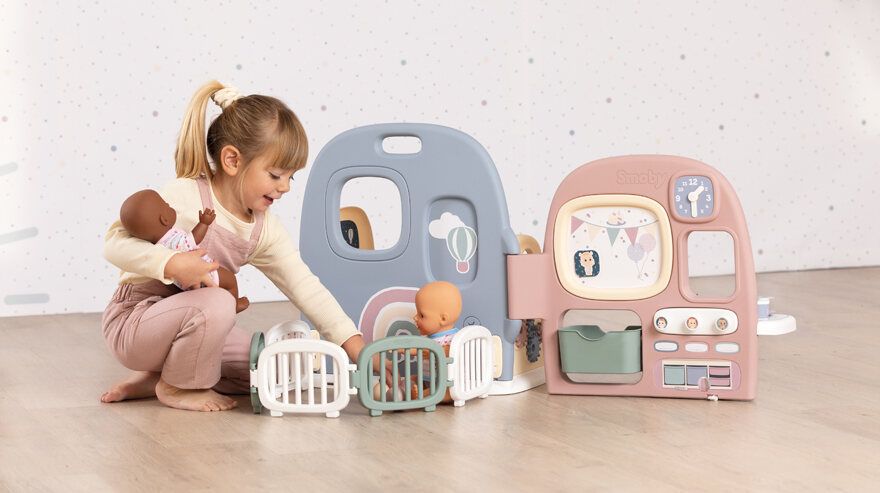Movement toys
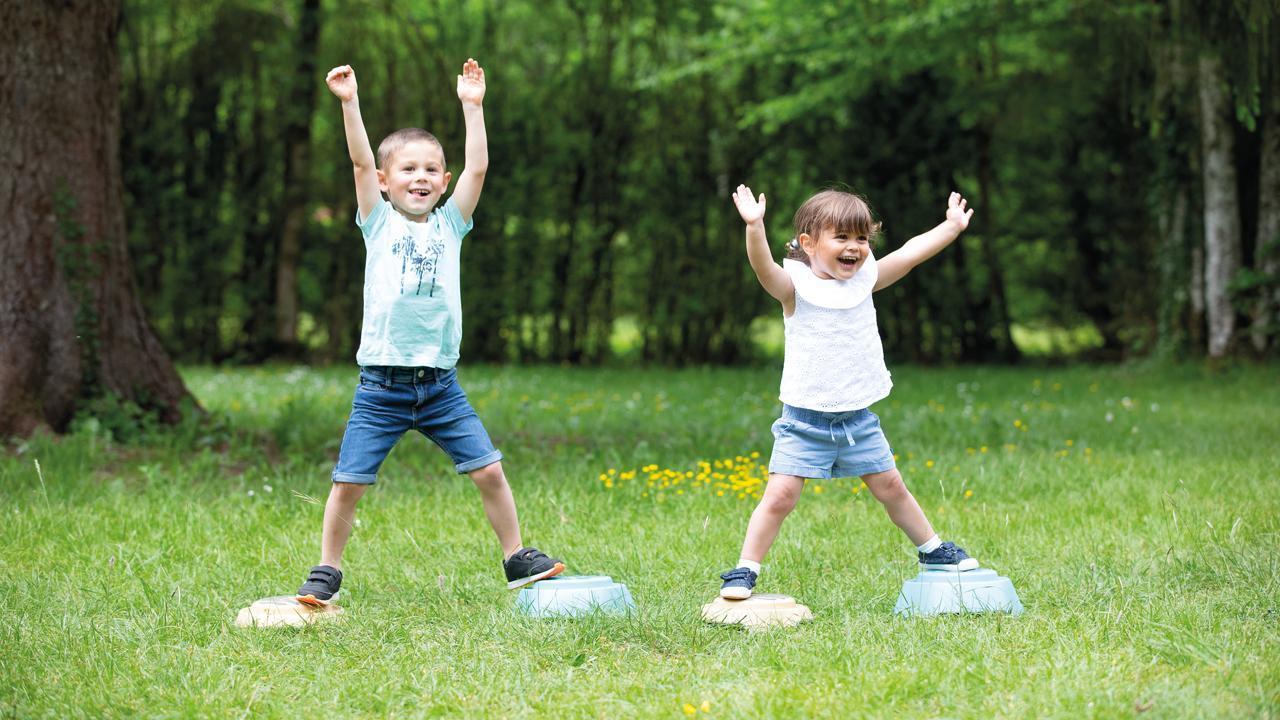
-
By
Petra J.
Movement education and movement toys as part of child development
Movement is omnipresent in our everyday lives and we are dependent on our body's ability to move in many ways.
The foundations of how our bodies move and our relationship to movement are laid in childhood.
This explains why movement education is so important in nurseries, kindergartens and at home. So-called movement toys are often used for this purpose, which create varied opportunities for movement education.
This article will inform you about the role of movement education in childhood and the variety of popular movement toys.
The importance of physical education in child development
Movement education is directly linked to the promotion of different skills and abilities, which is what makes it such an important tool for supporting healthy child development. Gaining age-appropriate movement experiences trains motor skills and coordination, sharpens perception, promotes social and emotional development and can even have a positive influence on brain development. All of these effects can be achieved in a particularly effective and entertaining way with movement toys for toddlers.

When your child tries out various outdoor toys on the playground or in the garden at home and swings, seesaws or slides, they are practising different body movements and training their balance. If, on the other hand, they play with sand and water toys with friends or siblings, they will develop their social skills as well as their physical ones.
The same applies to playing with children's vehicles: enjoying their new-found mobility and wild races with others will develop their physical and mental skills as well as their interpersonal skills. Your child can master many small challenges, celebrate a sense of achievement and experience again and again that they can rely on their body and its abilities. This results in a strengthening of self-confidence, which allows your child to trust themselves more and more and become braver.
Goals of physical education in early childhood
You've probably already guessed it: The goals of movement education in early childhood education are diverse. Below we look at three central goals and show how you can pursue them with movement toys:
Training of gross and fine motor skills
Movement education is inextricably linked to the training of gross and fine motor skills. You can address fine motor skills with toys that require precise movements and a certain amount of dexterity. These can be dexterity toys, such as the Cosy Seat play seat, for example, which are often suitable for promoting child development from the age of 1.
In contrast, gross motor skills development comes to the fore when extensive body movements of larger muscle groups are required.
Your child performs gross motor movements when running, jumping, crawling or riding the Rookie Red slide.
By providing your child with motor-stimulating movement toys, you can encourage both gross and fine motor skills. This is precisely one of the stated goals of movement education.
Improving body awareness
In addition, movement education in kindergarten, nursery and at home aims to improve body awareness. Through movement, your child learns to perceive their body and its individual components more consciously, to feel them precisely and to locate them safely in space. For example, when they are out and about on the Smoby balance bike, they feel the wind in their hair and learn how to position their feet cleverly to move forward. They experience what it feels like to lose their balance briefly in sharp bends, feel the effort of the movement in their leg muscles and experience how their body behaves when accelerating, turning or braking. These and similar experiences lead to a noticeable improvement in body awareness.
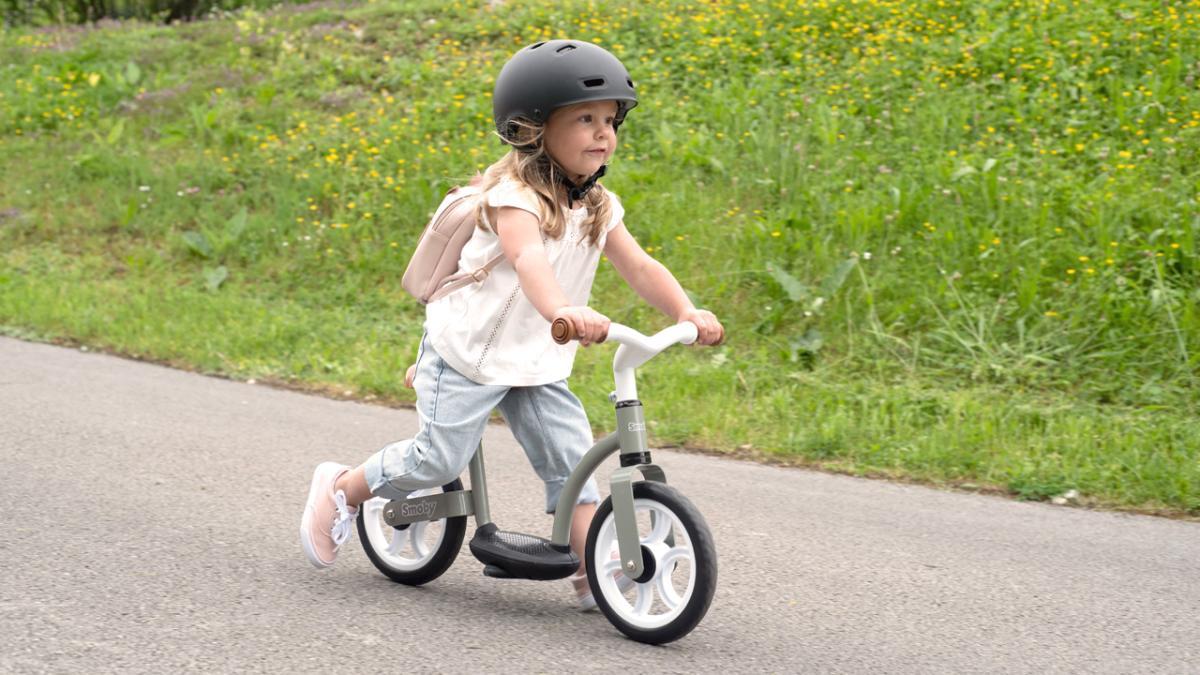
Development of a healthy lifestyle
You would like to get your child used to integrating movement into their everyday life from an early age, but your child's reluctance to move regularly stands in the way? This is where exercise toys can help. After all, the development of a healthy lifestyle, which is characterized by sufficient physical activity, is one of the goals of physical education. According to the motto "You can't teach an old dog new tricks", you'll definitely be doing your child a favor if you encourage them to get plenty of exercise at an early age.
Activating toys that make exercise fun will help you and ensure that your child sees exercise not as a necessary evil, but as an enrichment. For example, if your child doesn't feel like going for a walk with you, you could offer them a cool scooter - such as the Spidey scooter - to go with you.
These outdoor exercise toys often make it easy for kids to enjoy exercise in the fresh air.

Physical education at different ages
Movement education must always be geared towards the age of the child. Logically, after all, child development is constantly progressing, which changes the focus and opportunities for support. Accordingly, the movement toys used must also match your child's stage of development and meet their current abilities and needs.

With a well-chosen movement toy, you can tackle movement education using the proven educational methods of play-based learning and movement-based learning. Play-based learning describes the expansion of skills through play, while movement-based learning uses movement as the key to important learning experiences. Both are very possible with age-appropriate movement toys for indoor and outdoor use.
The following gives you an overview of which movement education toys are suitable for children of different age groups:
Physical education for young children
Toddlers benefit from physical education that takes their individual pace of development into account. In other words: movement education must take into account that child development at 2 years, 3 years and even at 5 years can vary from child to child. In principle, movement education for babies and toddlers should not be too complex in terms of content so that they are not overwhelmed. Movement toys for toddlers therefore need to be comparatively easy to understand and operate in order to get the best out of the little movement artists.
Toddlers experience most of their physical education at nursery and kindergarten, but should definitely also receive adequate support from their parents. This works wonderfully for children who are learning to walk due to their age, for example, with our walker trolley with cute doll or with the 3-in-1 walker trolley. Soft balls or large building blocks are also very popular with young children. Slightly older toddlers can pick up speed with various children's vehicles, put their balance to the test with age-appropriate balance toys or let off steam with simple ball games as a team.
Physical education for older children
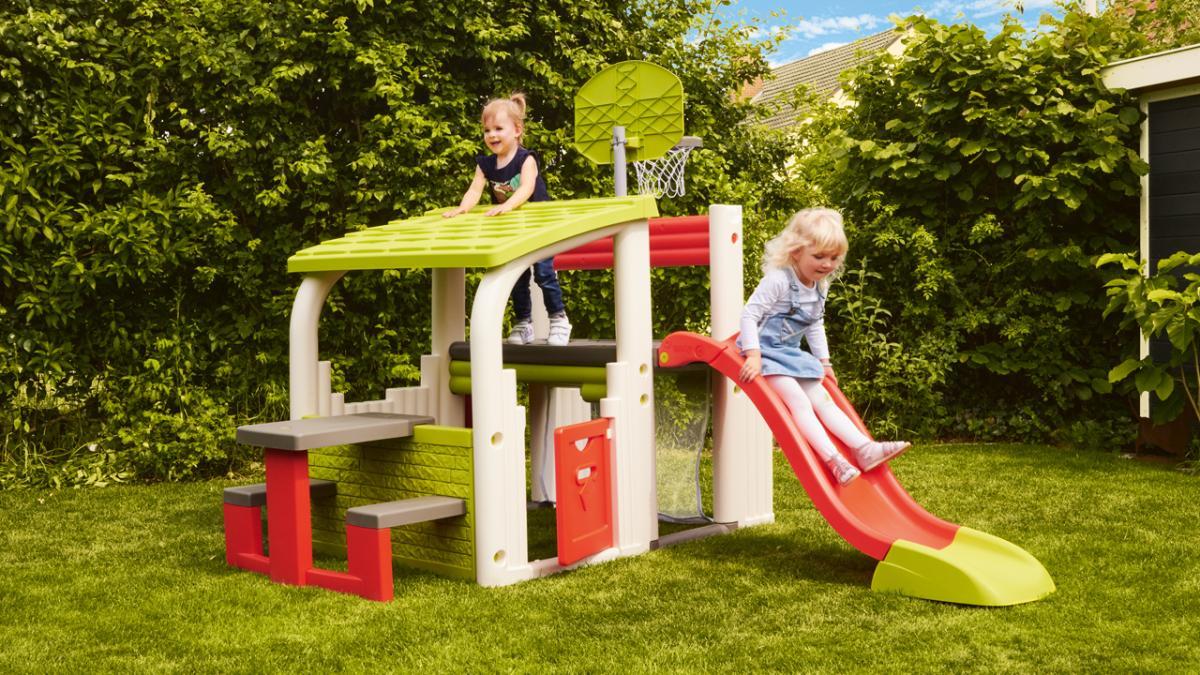
The stimuli that movement education provides must grow with the children. Kids who have outgrown toddler age, for example, won't know what to do with baby walkers. You can inspire them with fast-paced, sporty team activities that challenge their motor skills and at the same time bring them into interpersonal contact. You can also pick up on their interest in playing together and more challenging motor tasks with exciting outdoor movement toys - for example with our adventure climbing tower or the slide with water connection. Or you can familiarize your child with some child-friendly gymnastic equipment, such as the Smoby adventure balancing course, where they can test out the current limits of their physical abilities.
The following applies: The more varied the range of activities you offer your preschooler for movement education, the better!
Our movement toys from Smoby
At Smoby, we know how important comprehensive physical education is, which is why we have lots of movement toys for children of different ages. We would like to introduce you to some of our toys for active play fun below and show you just how diverse the world of activity toys is:
Children's vehicles in physical education
When asked about movement toys, many people first think of children's vehicles. No wonder, after all, these toys get kids moving in the truest sense of the word. Our tricycles, pedal-tractors,wheeled bikes, sliding cars and scooters are tailored to the motor skills of small children and can be used in particular to promote motor skills as part of movement education.

Baby and toddler toys
The keyword "motor skills" leads us directly to Smoby baby and toddler toys, which includes numerous movement toys for early motor skills development.
With toys that appeal to motor skills, such as our Tubo, the Cosy Seat play seat or the Parkgarage Big Garage, you can accompany the rapidly progressing motor development of babies and toddlers in a playful way.

Role play in movement education
From "father-mother-child" to criminal hunts and princess dreams to fire department missions, your child can experience the most colorful adventures with role-playing games. Adventures that generally don't do without movement, whereby role-play toys can create additional movement stimuli.
In addition to their imagination, your child can also use their physical abilities in role-play, for example when they use the Rowenta cleaning trolley through the house or pushes the Black+Decker lawnmower around the garden as a gardener.

Outdoor toys and sand & water toys in physical education
Outdoor toys and Sand and water toys turn outdoor exercise into a varied highlight full of stimulating effects.
With our playhouse on stilts, the Smoby water slide, our bucket set with watering can and similar outdoor exercise toys, exercise education takes place outdoors.
Craft and coloring toys in movement education
You want to focus on fine motor skills in movement education right now? Then use toys for crafting and painting. Creative toys that require a certain amount of dexterity to use inspire the imagination and take your child on a journey through their own imagination.
Baby dolls as movement toys for fine and gross motor skills
You can achieve motor development in a double pack with baby dolls and doll accessories.
Your child will use both their fine motor skills and gross motor skills when playing with the lovingly designed dolls and extensive accessories from the Smoby range.
Fine motor skills are trained, for example, when changing their favorite doll, while gross motor skills are sometimes needed to push the doll's pram.

Freeways as movement toys for fine and gross motor skills
The Smoby toys from the car racing tracks & accessories category are packed with action and are the ideal activity toys for indoor play. Children who are interested in cars anyway will no longer be able to keep their feet still when the first little speedsters race around the colorful racetrack. However, the tracks contribute to movement education even earlier: When assembling the track, your child can use their motor skills and observe how their movements become a little more dexterous with each installed element.
Conclusion: physical education in child development
Movement education rightly occupies a firm place in early childhood education, as it offers numerous opportunities for promotion.
It is usually impossible to imagine kindergarten or nursery without movement education. Nevertheless, parents should also make an effort to provide continuous support in this area at home. After all, all kinds of important skills, such as motor skills, coordination, balance and the development of social skills, are closely linked to physical education.
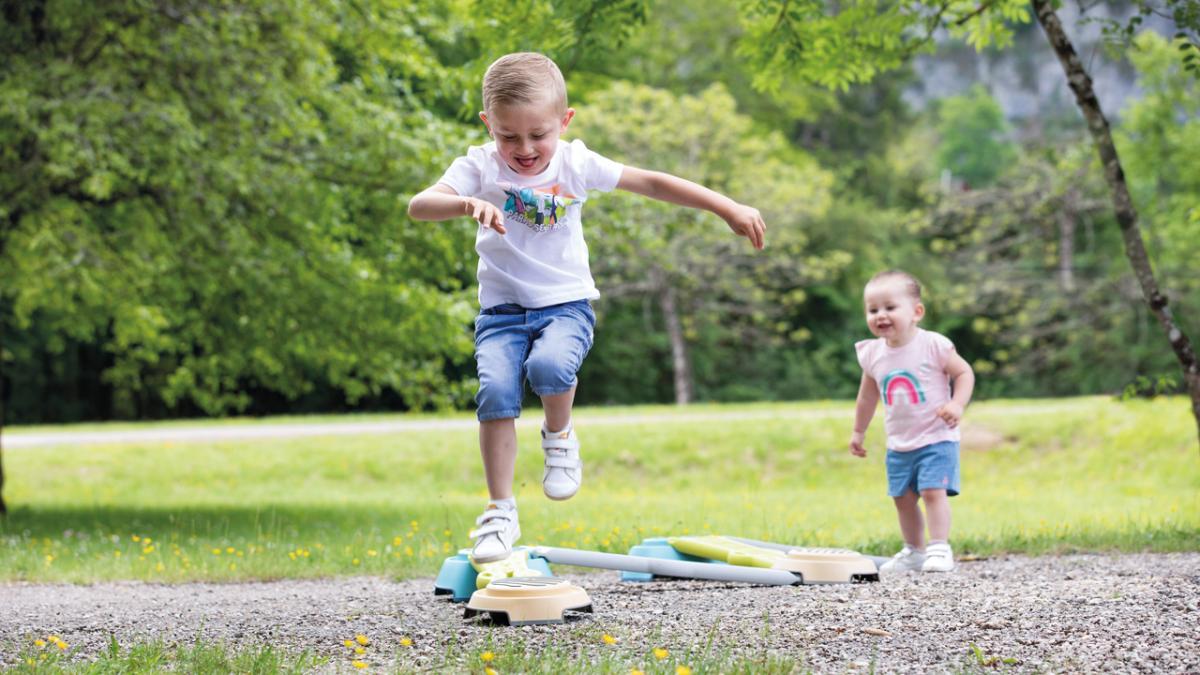
You want to do more for your child's movement education, but still need high-quality, child-friendly movement toys Then you're in good hands with Smoby!
Take a look around our Smoby Shop, get to know our themed worlds and find (movement) toys that inspire.














